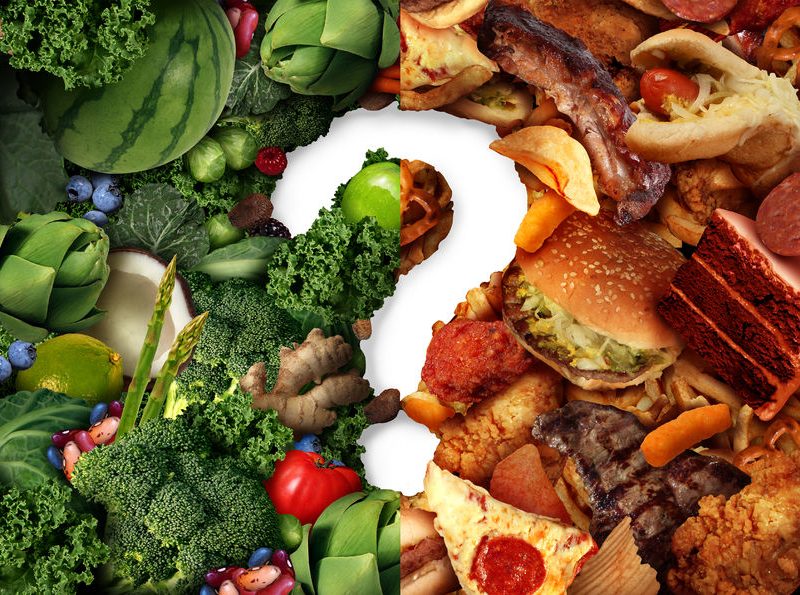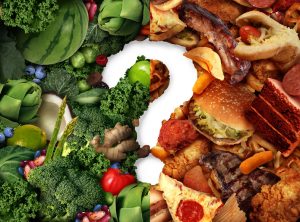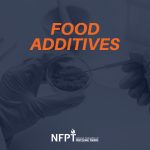

If your client is struggling to get results even though they are reliable, compliant, and motivated, you may want to refer him or her to a qualified nutrition professional to implement an elimination diet and explore the possibility of an unknown food allergy or intolerance.
An elimination diet is a strategy to help determine whether a particular food is a contributing factor in a person’s chronic condition.
Many people suffer from food intolerances that they are not aware of, and those foods could be contributing to aches, pains, fatigue, systemic inflammation, mental fog, autoimmune disease, and a host of other conditions. However, a food intolerance is not the same as a food allergy.
Food Allergy vs. Food Intolerance
Although the terms “allergy” and “intolerance” are often used interchangeably, they describe separate conditions. A food allergy involves a direct provocation of the immune system. The immune system creates antibodies called Immunoglobulin-E (IgE) in response to the introduction of particular allergen, in this case a food allergen, and the onset of symptoms can occur in minutes.
These IgE antibodies are detectable in blood tests and these tests provide confirmation of the body’s immune response.
- Less severe symptoms include rash (hives), and swelling or itching of the mouth or tongue.
- More severe symptoms include trouble breathing, wheezing, swelling of the airway, nausea, or vomiting.
These symptoms occurring simultaneously, in conjunction with decreased blood pressure and a weak rapid pulse, is known as anaphylaxis. If anaphylaxis occurs, it can be life-threatening, and the quickest and most well-known remedy is the delivery of epinephrine (adrenaline) by an auto-injector, such as the EpiPen®.
If an allergic response is severe enough to require the use of such a device, the person should immediately seek medical attention even if symptoms begin to subside. Currently, the only known treatment for food allergies is to avoid the offending food.
A food intolerance provokes a less severe reaction from the body and does not directly involve the immune system. It is more common than food allergy, and it is defined by the body’s inability to adequately break down and digest a particular food.
Typical symptoms include nausea, diarrhea, stomach pain, bloating, or flatulence. It does NOT include swelling of the airway, hives, or anaphylaxis. It is important to note that food intolerance may not always present with gastrointestinal symptoms as they can also include insomnia, fatigue, joint pain, rashes or skin breakouts, headaches, brain fog, sinus or other respiratory issues.
For example, one of the most well-known food intolerances is lactose intolerance, which is characterized by the body’s inability to break down lactose (the carbohydrate in milk) due to an insufficiency of the lactase enzyme. Symptoms can include bloating, nausea, flatulence, or diarrhea, but it will not result in anaphylaxis.
Currently, there is no credible diagnostic tool for determining food intolerances, which is why an elimination diet may be the best way for an individual to determine his or her own intolerances.
What food is eliminated?
Common foods to eliminate include wheat, grains, legumes, dairy, soy, caffeine, alcohol, nightshades, red meat, eggs, shellfish, citrus fruits, chocolate, or specific food additives (food dyes, guar gum, MSG, etc.).
Not all of these foods need to be removed, though it is possible for an individual to remove several foods from their diet at once to see if their condition improves. The Whole30® is a very popular template for an elimination diet, though most people ignore the reintroduction phase.
How does elimination dieting work?
For three to six weeks, the individual will not consume the foods or food additives he or she has chosen to eliminate. This will require planning and preparing meals ahead of time, reading ingredient labels and becoming familiar with alternative names for the same ingredient, asking how food is prepared at restaurants, and informing friends and coworkers of this endeavor to elicit their support.
If the individual accidentally ingests one of the foods he or she is eliminating, the process should restart in order to ensure that results are not skewed.
After the elimination period is complete, the individual consumes one serving of the eliminated food and then resumes the elimination diet for two more days while observing symptoms. This process usually repeats for a period of two to three weeks, depending on how many foods were eliminated.
During the whole process, elimination and reintroduction, the individual should track their symptoms.
If he or she is not utilizing this process to try to improve a specific condition, they should track the following: sleep quality, energy levels, mood, skin health (rashes/breakouts), bloating, joint mobility, workout quality, bowel movement quality or regularity, libido, food cravings, ability to focus, and stress levels. The individual may discover that staying away from certain foods may benefit them in an unexpected way.
The Role of a Trainer
While it is outside the scope of practice for a personal trainer to guide a client through an elimination diet, it is important to be familiar with the process in order to offer support and feedback to your client. If you know that your client is implementing an elimination diet, you can advise them on foods that are alternative sources of vitamins or minerals that they may be missing out on.
For example, if a client eliminates dairy it would be appropriate to advise them that fortified almond milk, sardines, and kale are good alternatives for calcium. You can send recipes that do not include the food(s) they are eliminating.
Most importantly, you can provide feedback on their performance, mobility, mood, and ability to focus or handle the stress of a workout. Our duty as trainers is to help our clients help themselves, and understanding and supporting the ways in which our clients choose to take charge of their health is paramount to the overall success of the client-trainer relationship.
[info type=”facebook”]Join the conversation in the NFPT Facebook Community Group.[/info]
References
- Jin J. Treatments for Food Allergies. JAMA. 2017;318(19):1945. doi:10.1001/jama.2017.17306
- Chang HJ, Burke AE, Glass RM. Food Allergies. JAMA. 2010;303(18):1876. doi:10.1001/jama.303.18.1876
- Lomer, M. C. (2014). Review article: The aetiology, diagnosis, mechanisms and clinical evidence for food intolerance. Alimentary Pharmacology & Therapeutics, 41(3), 262-275. doi:10.1111/apt.13041
- Food Elimination. (n.d.). Retrieved July 12, 2018, from https://www.choc.org/programs-services/eosinophilic-esophagitis/food-elimination/
- Elimination Diet: Comprehensive Guide (The Institute for Functional Medicine). Retrieved July 12, 2018, from https://p.widencdn.net/he7a5v/Elimination-Diet—Comprehensive-Guide_v6
- Walsh, B. (2018, February 23). Food sensitivities and intolerances: How and why to do an elimination diet. Retrieved July 12, 2018, from https://www.precisionnutrition.com/elimination-diet






